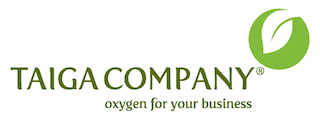The Ultimate Tips For Branding Green Business

Consumers are more concerned than ever about the environment, so starting a business with green credentials is a good idea. To take advantage of this, you will need to know how to
brand
your green business well.
Whatever size of business you have, sustainable branding is important. It tells your customers who you are, what you represent, and that you exist. Branding a green business involves a few different steps, from advertising and PR to reputation building and customer service.
These branding tips and ideas can help you to build and develop your brand to grow your customer base, increase revenue, and grow your business.
Tell A Story
Green marketing, PR, and advertising are about storytelling. When you brand your green business, your brand’s story ought to come across so consumers know who you are. Your company name, logo, slogan, and any messages need to get this across. Make sure this story makes it obvious what you do. If you want people to buy your products or services, they need to know who you are. A brand design agency can help you with this.
Don’t Overcomplicate Your Branding
It’s not easy to build a green brand. You need to make sure that your customers know why your brand is promoting a sustainable message.
With all the different marketing techniques that are being used by brands, it can be easy to go too far. Don’t overcomplicate your message. Stay away from using long or complicated slogans, too much jargon, or inaccessible tricks like wordplay. Keep your branding simple and powerful.
Always Come Back To The Customer
Always keep your customer in mind when you’re developing and putting in place elements of branding. Don’t let yourself get caught up in tactics and designs for their own sake if they’re not suitable for your target market. At the start of the branding process, sit down and spend some time working out who your ideal customer is, and let this lead all your branding strategy.
Be Targeted
When you are working out who your target customer is, keep in mind that your brand doesn’t need to appeal to everyone. With a few exceptions, almost all brands are trying to target only a small section of the population, and usually in a very specific niche. The more targeted and focused your branding is, and how the more it appeals to one niche, the more effective it will be. This approach is much more effective than broader strokes and trying to appeal to everyone.
Build Relationships
One of the best things you can do to grow your business and send a green message is to build a strong relationship with your customers. Loyal customers are incredibly valuable and will be able to support your business in a lot of different ways. Through your branding, you can engage with your customers on a more personal level. Aim to make your branding friendly, warm, and let it show your brand’s personality.
Be Interactive
Another good way to build those important customer relationships is through interactions. Interaction engages your customer base and makes them feel as though they are a part of your brand’s story, rather than just someone watching it. There are lots of interactive marketing techniques that you can use, such as polls, surveys, competitions, and many more. Trade shows are also a good opportunity to engage with your customer base in lots of interactive ways. Look for a good trade show builder to help you to create a booth that has plenty of interactive design features.
Ask For Feedback
In the same category as building relationships with your customer by giving them a stake in your brand is asking them for feedback on your services or products. There are lots of different ways that you can do this, such as feedback forms, comment sections on your company website, customer surveys, and more. Listening to the feedback that you get from your customers and use it to improve the way you do business
Identify Your Why
Effective branding is all about communicating clearly who you are as a brand. To be able to do this, you need to know who you are. In order to be able to do this, identify what your why is. Why do you do what you do? What is the problem that you are trying to solve for your customers? Once you have identified what this is, make it one of the central parts of your brand.
Do Market Research
Before you release any new elements of your branding, whether that’s a new logo, slogan, or anything else, do some market research first to see how the consumer responds to it. This doesn’t have to mean you carry out full-scale testing with a professional firm, focus group, or anything else like that. If you’re a small business or a startup, you could just reach out to your previous customers, your network, or your friends and family and ask them for some feedback.
Conduct Competitor Analysis
Just because you are launching or relaunching your brand doesn’t mean that you need to completely reinvent the wheel. Before you launch, take a look at what your direct competitors are doing. It’s especially important to see what your most successful competitors are doing. By doing this, you can work out what is working out well for them and what elements you might be able to adapt for your business and apply to your own branding. You can also the process of competitor analysis to identify the mistakes your competitors have made and what weaknesses they have that are harming their brands. If you know what these mistakes and weaknesses are, you can avoid them yourself.
It can seem intimidating at first when you start trying to brand your green business, but there are all kinds of steps to take with your branding that can help your business to thrive. Great branding and marketing are easier to do when you implement these tips.


